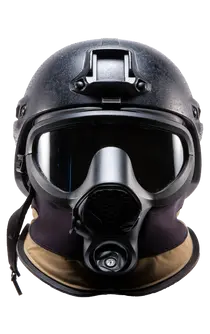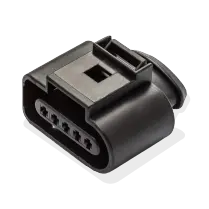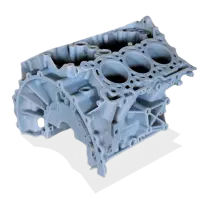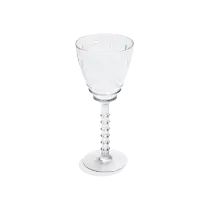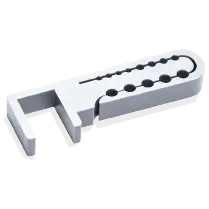Additive Manufacturing

What is Additive Manufacturing?
Additive Manufacturing, or 3D printing, is the process of constructing a three-dimensional part from a digital or CAD model. Most Additive Manufacturing processes involve depositing, joining, fusing, or solidifying a material under a machine’s control in layers. The material can be plastics, liquids, or powders that are fused together. Additive Manufacturing is widely used as an umbrella term to describe industrial 3D printing processes where material is “added” together.
In the last 20 years, new Additive Manufacturing technologies have been developed at a record pace. Rapid prototyping was once a limited process used to review rough prototypes. It has evolved into sophisticated Additive Manufacturing processes that produce fully finished parts with complex geometries made from a wide range of materials. The repeatability, precision, and material options have made Additive Manufacturing a full production option in the manufacturing world.
How Does Additive Manufacturing Work?
A 3D model is created with CAD software or a 3D digital scanning technology. Next Additive Manufacturing professionals examine the 3D model file to determine the best process and layout for manufacturing the part. The digital file is then “sliced” into layers that provide instructions to the machine on how the materials will be printed, fused, deposited, or joined.
Some Additive Manufacturing processes for polymer materials include:
Material Extrusion: With Fused Filament Fabrication, aka FDM (Fused Deposition Modeling), the part is produced by extruding small beads or streams of material from a nozzle that harden immediately to form layers on a build table. An industry standard, fused filament fabrication 3D printing is a process that provides engineers and designers with numerous material options with the open-source machine platform. Durable, rigid, single-color parts with moderate detail are suitable for check fixtures, specialized tools, functional prototypes, and end-use parts.
Material Jetting / Binder Jetting: An ultraviolet-sensitive gel is deposited by a printhead and immediately cured by a UV lamp. The machine can use rigid and rubber-like materials and has an excellent surface finish. Material jetting 3D printing is a solution for designers who want excellent visual models with an end-product feel. This technology can incorporate multiple materials and colors into one print. It is suitable for complex, flexible models.
Powder Bed Fusion: These processes use selective fusing of materials in a granular powder bed. Material can be fused by laser sintering or laser melting. SLS (selective laser sintering) uses powdered thermoplastics (typically nylon) precisely fused by a high-powered laser. With automated vapor smoothing, SLS production parts are water-tight, air-tight, heat-resistant, strong, and easy to reproduce. Nylon also can produce living hinges and flexible end-use parts and can be easily dyed in various colors.
Stereolithography (SLA): Uses ultraviolet-sensitive liquid resins (photopolymers) that are instantly cured when activated by a UV laser. Then the parts are post-processed with additional UV and thermal treatments when necessary. Stereolithography is a speedy and highly accurate process used most commonly for form and fit prototypes, master patterns, and large concept models. The combination of speed and design freedom offered by Stereolithography enables rapid iteration for new product development.
Digital Light Processing (DLP): Uses UV-sensitive liquid resin cured by a digital light projector. Ideal for projects requiring high detail and finishing in various production-grade materials. From flexible silicone to rigid high-temp cyanate ester Digital Light Processing can make parts with different durometers and characteristics. It’s an excellent technology for small end-use components, light metal part substitutions, functional, high-detail prototypes, jigs, and fixtures.
Hybrid PhotoSynthesis: This process blends stereolithography and digital light processing to create highly accurate and efficient 3D prints. It is remarkably fast while maintaining incredibly smooth surface areas similar to injection molding. Hybrid PhotoSynthesis can be used for prototypes and end-use parts such as handles, cranks, knobs, fasteners, snap-fits, and cases.
Multi Jet Fusion: HP’s proprietary Multi Jet Fusion (MJF) printer uses infrared energy to precisely fuse a powdered thermoplastic and a liquid agent. This technology can create functional nylon prototypes and end-use parts. A few ideal applications are brackets, connectors, hinges, housings, and thin-wall ductwork. Multi Jet Fusion is also great for producing accurate parts in higher volumes.


Advantages of Additive Manufacturing
Additive Manufacturing offers many advantages, some of which include:
Faster prototyping
Reduced manufacturing costs
Increased product customization
Improved product quality
High precision and accuracy
Fully finished useable products and models
Unique properties that are difficult to achieve using traditional manufacturing methods
Additive Manufacturing Materials
There are three types of materials used in Additive Manufacturing:
Polymers: The most commonly used materials for Additive Manufacturing are polymers. With the wide range of AM processes, many types of polymer materials can be used including: Nylon, ABS, Polycarbonate (PC), PLA, Ultem, TPU, resins, and proprietary materials
Metals: Titanium alloy, stainless steel, cobalt chrome alloy, aluminum, gold, and silver
Ceramics: Silica/glass, porcelain, and silicon-carbide

Additive Manufacturing Applications
Additive Manufacturing is used in a wide range of industries and products. Some examples include:
Aerospace: Airframe and aircraft interiors, satellite components, turbine housings, turbine blades, radomes, battery housings, circuit boxes, flame resistant housings, pilot and navigation controls, missile precision optical components
Construction: Fasteners, hand tools, accessories, window and door hardware, pipe and electrical fittings
Consumer: Containers, packaging, dog toys, electronic devices, household items, electronic device cases, appliances, furniture, toothbrushes, toys, sporting goods
Defense: Sight scope, EMI/RFI shielded devices, security equipment, firearms components, optical components for weaponry, combat gear and devices
Energy: Chemical sensor device, metering equipment, smart grid components, fluid handling equipment
Industrial: Food processing equipment components, beverage filter components, food storage, containers, irrigation systems, agricultural equipment, gears, mechanical parts, lawn care, fluid handling systems, urban/organic farming
Medical: Drug delivery devices, respiratory equipment and disposables, diagnostic test kits, device packaging, prosthetics, implants, diagnostic laboratory equipment enclosures, surgical arms and robotics, surgical prep products, imaging components, dental equipment, biotech devices, medical furniture and beds
Technology: Telecom adapters, router housings, cable connectors, electronic device housings, computer components
Transportation: Automotive parts, RV components and accessories, ATV controls and parts, train seats, baggage containers, watercraft parts, snowmobile controls and accessories, fluid handling systems
.png)




